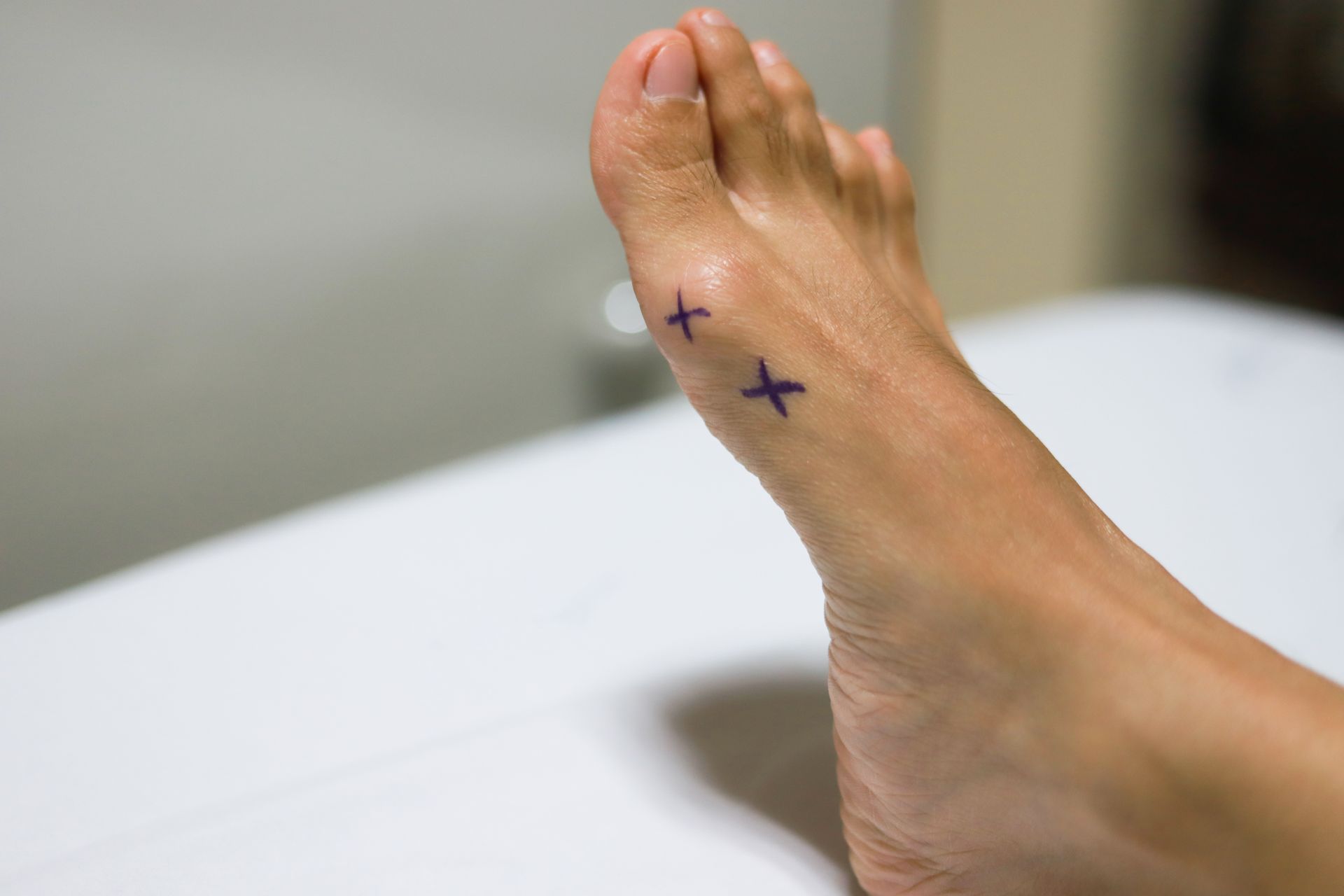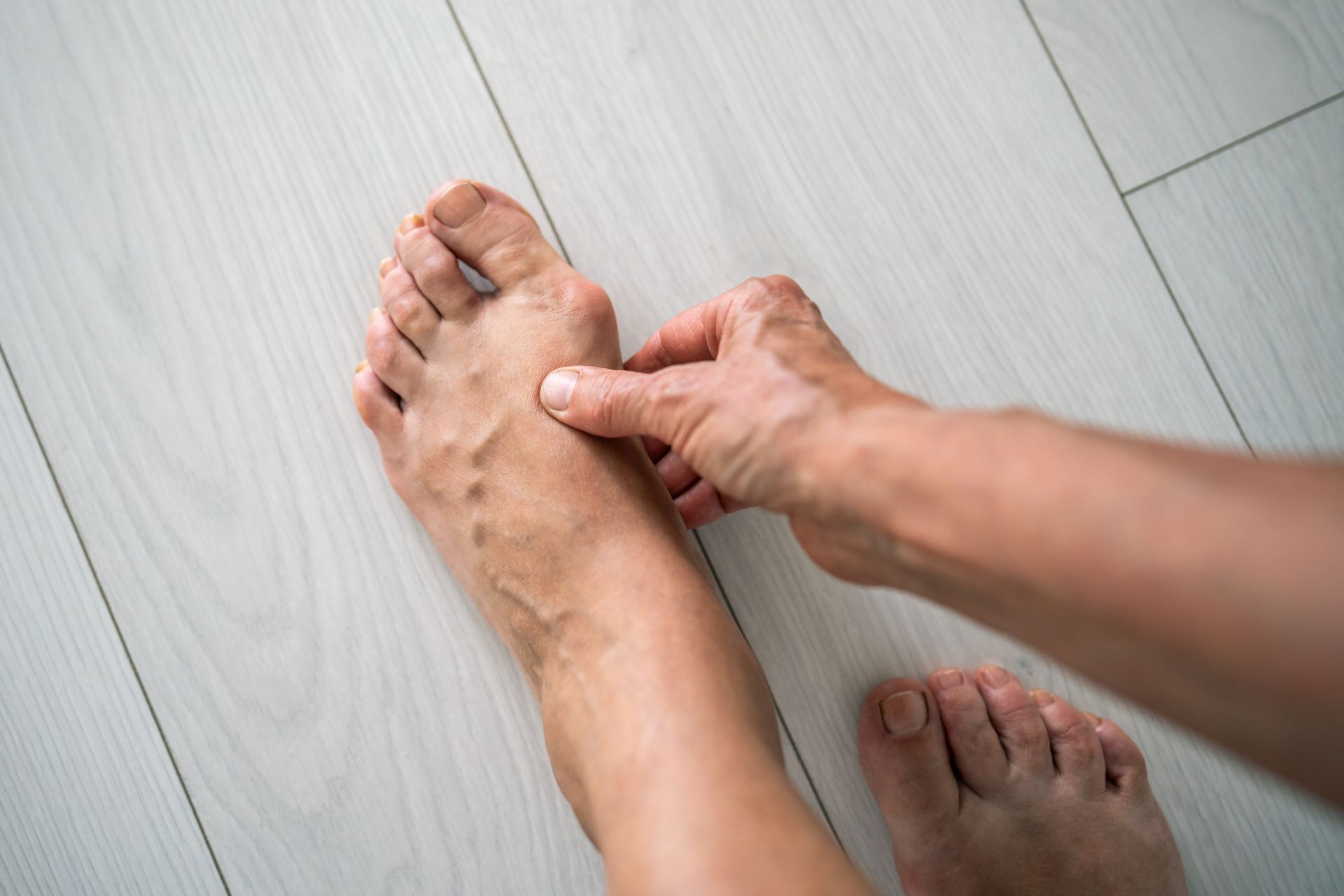What is a High Ankle Sprain?
An ankle sprain typically involves the ligaments on the outside of the ankle (the lateral collateral ligaments). Ankle sprains affecting the syndesmosis and are called high ankle sprains. These injuries are called this because they involve the ligaments above the ankle joint. The high ankle ligaments help hold together the lower leg bones (the tibia and fibula), and tremendous force is put upon them. A high ankle sprain can take twice as long to heal as a lateral ligament sprain.
What is the Syndesmosis?
The ankle syndesmosis is a collection of tight bands that secure the lower leg and prevent gapping of the tibia (the large inside bone) and fibula (the smaller outside bone) during activity. Ligaments are like fixed-length belts that hold two bones together. Above the ankle joint, the syndesmosis has ligaments on the front (anterior) and back (posterior) of the tibia and fibula. These are the syndesmotic ligaments and are called the anterior inferior tibiofibular ligament and the posterior inferior tibiofibular ligament. There are more structures that support the tibia and fibula, but these ligaments are the focus of this discussion.
Who Gets a High Ankle Sprain?
A syndesmosis or high ankle sprain occurs when one or more of these ligaments is overstretched or injured. In severe cases, the syndesmosis can tear, creating instability in the lower leg. High ankle sprains occur when the foot is planted on the ground and the lower leg undergoes excessive twisting inward. They can also occur when the foot is suddenly and significantly dorsiflexed (the foot rotates upward toward the leg). Picture a football player being tackled, and the planted foot being forced upward, or imagine a baseball player sliding into second base and the foot dorsiflexing and rotating outward.
How is a High Ankle Sprain Diagnosed?
Patients with a high ankle sprain will have pain above the ankle joint and may have swelling and bruising. Squeezing the two leg bones together just below the knee will often radiate pain downward to the injured syndesmotic ligaments. Pain with external (outward) stressing of the ankle joint can also reproduce pain in the high ankle ligaments.
X-rays are helpful in assessing a high ankle sprain. X-rays of the ankle and lower leg help to rule out fractures and confirm the appropriate alignment of the tibia and fibula. In severe injuries , widening of the space between the tibia and fibula can indicate instability between the two bones. An MRI shows bony detail but also shows ligaments and tendons; these can be helpful when x-rays and clinical examination are not definitive. A CT can also be a helpful diagnostic tool.
What is the Treatment for a High Ankle Sprain?
If no bones are broken and the ankle joint is deemed stable, then initial immobilization in a pneumatic walking boot rests the injured ligaments. Crutches may be used if weightbearing is painful; this usually subsides in one or two weeks. Once the initial pain and inflammation have subsided, it is important for athletes to begin aggressive physical therapy. This helps to decrease inflammation and reestablish range of motion. Regaining strength in the surrounding tendons and restoring proper balance is imperative before resuming athletic competition. Failure to do so puts the athlete at risk for lingering pain and recurrent injuries.
If the syndesmosis ligaments are deemed torn and the ankle joint is unstable, surgery may be necessary for an optimal recovery. This severity of injury is more common with fractures of the ankle bones than as an isolated injury.
How Long is the Recovery for a High Sprain?
The general rule for high ankle sprains is that they take twice as long to heal as a typical ankle sprain. The typical lateral ankle sprain heals in 3 to 4 weeks, and a high ankle sprain can take 6 to 8 weeks to fully recover. This is because of the significant force that is transferred through the syndesmosis during athletic activity. Returning to competition too soon after a syndesmosis injury can be detrimental to an athlete’s ultimate goals. In severe cases involving ankle instability or fractures, the recovery can be longer.
High ankle sprains require prompt and thorough treatment. Should you suffer one of these injuries, contact our Baton Rouge orthopedic clinic to request an appointment for evaluation, diagnosis, and treatment.


